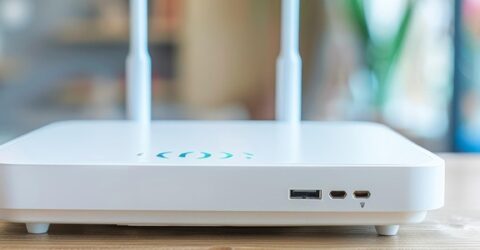What to do if your router breaks
A broken router spells disaster in the short term, but there are easy ways to resolve this issue

All electrical goods have a finite lifespan, which eventually ends with either a bang or a whimper.
Some devices go out in a literal blaze of glory, with smoke emerging from air vents and a lick of flame indicating the end times have arrived.
Other machines are more discreet about their demise, merely refusing to boot up after a component wears out or fails.
As the most underappreciated appliance in our homes, broadband routers are rarely noticed until they begin to slow down or develop faults.
Once they fail entirely, the result is instant disconnection from the internet. A broken router means broadband data can’t be transmitted around your property.
Fortunately, while the short-term impact will be a lack of WiFi and hardwired connectivity throughout your home, issues surrounding broken routers are easily resolved.
Here’s what to do.
Turn it off and turn it on again
The first step towards identifying a broken router is to see if a reboot cures it.
It won’t fix a fried circuit board or extinguish any flames, but like most electrical appliances, giving it a few minutes to cool down and reset might resolve whatever issue is affecting it.
Routers often benefit from the firmware updates installed during a reboot, and overheating may be resolved (even temporarily) with a brief period of downtime.
If the router still won’t spring into action after being unplugged and rested, it’s time to escalate matters to the people who know this hardware best…
Ring your ISP’s technical support team
Your broadband supplier’s tech support team will be able to conduct diagnostic tests to determine whether the router has frozen, become faulty or failed altogether.
To run tests, routers using the Openreach network (as opposed to full fibre firms like Virgin Media and Grain) will need to be plugged into your home’s main telephone socket.
The tech staff will run a variety of checks remotely. They’re also likely to ask if any router lights are illuminated and whether these lights are consistent or changing.
They might conclude that the hardware can’t be repaired, in which case you have two main courses of action…
1. Ask your ISP for a new router
Providing the router hasn’t failed due to avoidable damage (such as liquid spillages or a dog chewing it), the ISP is duty bound to replace it to maintain your broadband contract.
They’ll ask for the old router to be boxed up and returned, usually by re-using the packaging the replacement new router will be delivered in.
This replacement is likely to be identical to the broken router, and there’s little chance of the same fault occurring a second time, unless it’s an enduring manufacturing fault.
If the original model has been discontinued, you might receive a newer and more powerful version, although you could always achieve that yourself…
2. Source and purchase a new router yourself
If your outgoing router hasn’t been especially reliable, powerful or fast, it may be possible to replace it yourself.
Third-party routers are compatible with all Openreach connections, and can be used in conjunction with full fibre networks by plugging them into the ISP-supplied router – when it works.
Third-party models vary in quality, but the best broadband routers include multiple external aerials, a high number of sockets and ports, app-powered remote control and tri-band coverage.
In larger properties and homes with multiple web-enabled devices, the extra network coverage offered by the best broadband routers could be transformative.






